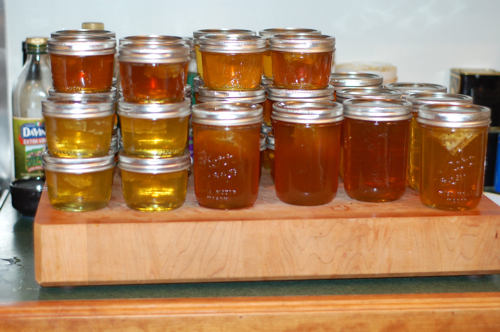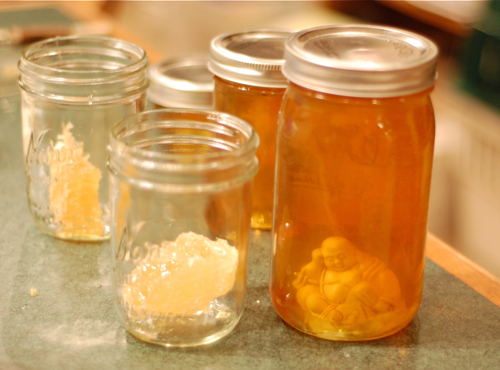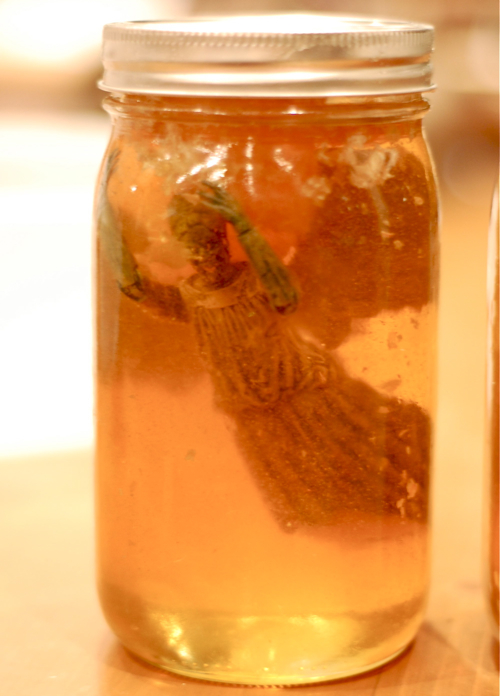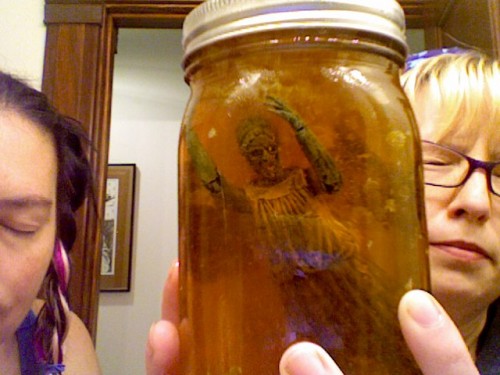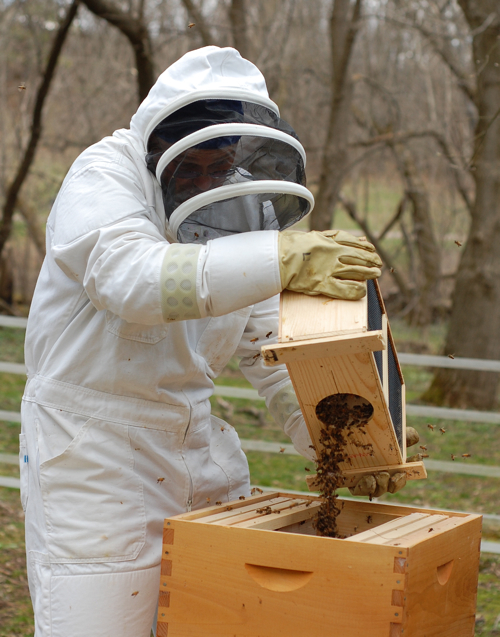 This is Kelly McCullough, he came out with us to help hive four more packages of bees on Sunday. His family kept bees when he was kid and I have to say, he's the first person I've ever seen get almost every single bee out of the travel cage. I can't remember if it was in the comments or on Twitter, but they wanted to know how the bees got into the travel crate. They were sucked out by vaccuum and put into the crate with a new queen in a cage. It's pretty incredible when you think about all the "trauma" these bees have been through.
This is Kelly McCullough, he came out with us to help hive four more packages of bees on Sunday. His family kept bees when he was kid and I have to say, he's the first person I've ever seen get almost every single bee out of the travel cage. I can't remember if it was in the comments or on Twitter, but they wanted to know how the bees got into the travel crate. They were sucked out by vaccuum and put into the crate with a new queen in a cage. It's pretty incredible when you think about all the "trauma" these bees have been through.
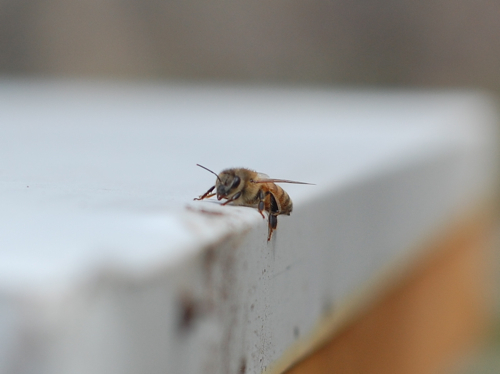
Happily chugging along with a queen in a hive in sunny California (or Texas or some other warm state). Suddenly a big sucky beast invades their home, transports them into a darkness and then a cage. They've lost their queen pheromone, the guiding force they've come to trust and are now in cage with thousands of other bees, suddenly a new queen pheromone works its way to them but they are trapped in a cage with no comb. They have food, but just carbs, no protein. Then they are shipped and jostled to colder parts of the country, colder than they have ever experienced in their lives. A bit more jarring and tossing (akin to a huge earthquake and they are dropped into a mostly empty box. A sense of duty based on age tells them to evaluate the home, explore the region and build.
Pretty resilient and pretty cool when you think about it and completely understandable that some bees look exhausted when they arrive.
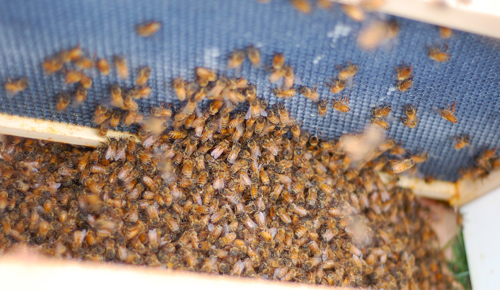
The hiving of the four new packages went fairly well. It's interesting to me that at this point, I'm happy to fall into naturalist/educator mode for installing bee packages. I think having done just about all of them since the first year that I enjoy letting anyone else who wants to hive a package a go and be there for moral support and help getting queen cages open. Lorraine has been there for most but still has some understandable nervousness since she had an unfortunate wasp incident as a kid. Phobias are hard to conquer, but she still goes for it. Kelly got a video of her installation and you can view it on YouTube. It's kind of like watching some odd family therapy.
After all the new bees were installed Non Birding Bill and Kelly helped me check on the Russian bees we hived earlier in the week. If you recall, there was concern that one of the queens was dead on arrival so Mr. Neil and Lorraine ordered a replacement. Since that queen would be totally new to the hive, she would have to stay in her cage for a few days for the workers to absorb her pheromone. Mr. Neil put her in on Thursday to give the workers a chance to get used to her. Non Birding Bill checked it the next day and said, "She's already out."
That was too soon, I thought bees not used to the new queen could kill her. But I figured we hope for the best and deal with this later. When we were checking that hive on Sunday, we immediately found the queen because she's marked with a white dot:
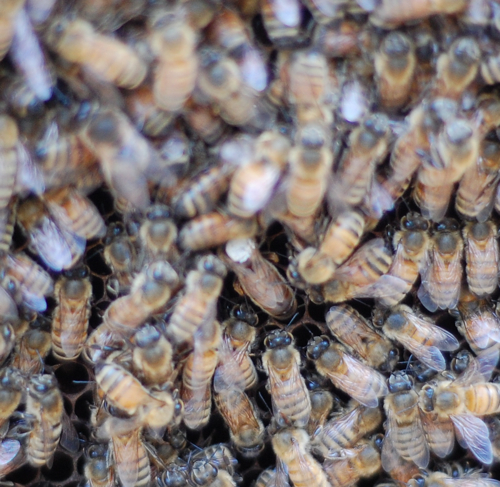
See the reddish large bee in the center with the white dot, that's the queen. Then NBB said, "Hey, the queen I saw had a much smaller dot. I gave Kelly this frame to hold while I searched for a second queen on a different frame.
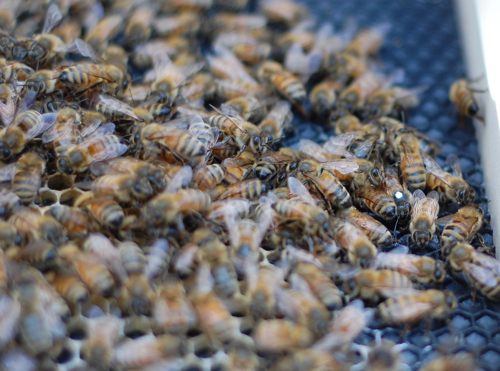
"There she is," NBB said noting the second queen (she's on the right). We have 2 queens in 1 hive (insert sad trombone here). Not sure what we're going to do about this. I was trying to formulate a plan and NBB said, "Don't do anything, let the bees sort it out. Every time we try to help, we screw them up and the hive fails. Leave it alone."
Sage advice indeed.
I know there are systems for 2 queen colonies, but that's two well built colonies not two new ones. If the queens find each other, they will fight to the death. However, both could die in the fight. We put the hive back together and I put a frame between the two queens. Maybe if they survive the next couple of weeks we could try and set up something like this. I have to admit that if one queen dies, I'll feel bad for getting them in this situation. Ah beekeeping, you always leave me with more questions than answers.
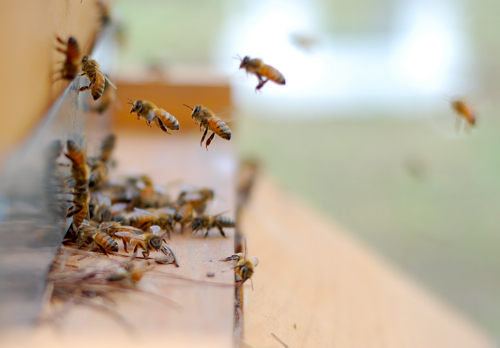

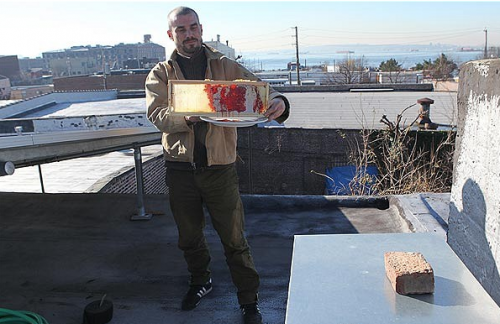 Last week,
Last week, 